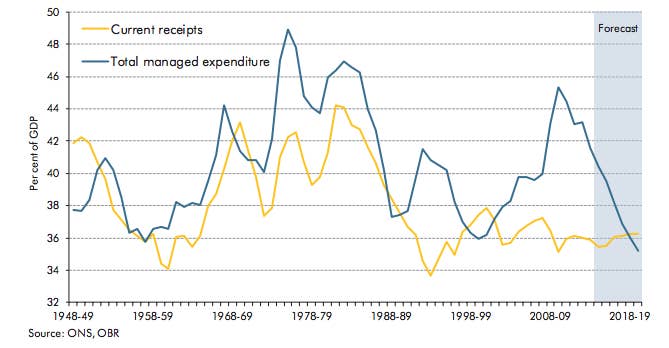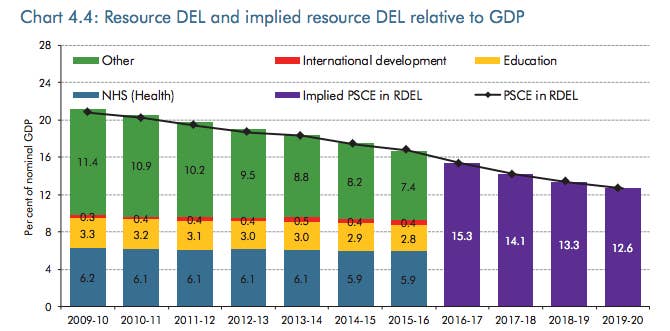UK government spending is falling. But despite all the austerity measures of the last five years, the country is only 40% of the way through the planned government cuts.

Here's another graph that shows the scale of the challenge. There's going to have to be more cuts. Lots more cuts.

This graph show the scale of what's involved. Non-core government services would be pared back even further.
If the health, education, and overseas aid budgets are protected then all the spending cuts need to come from elsewhere. And this means further cuts to departments which have already reduced their spending in recent years.
The OBR, while not allowed to have an official opinion, does suggest these cuts are really, really ambitious. Or, as it puts it, a "significant challenge if they were confirmed as firm policy".
The total sum available for spending outside health, education, and aid would be limited to £85.6 billion a year. Which isn't much when you consider that the Ministry of Defence and the Department for Business, Innovation & Skills currently spend £40.6 billion a year between them.
The OBR report also contains this jargon-heavy statement that suggests the UK will have to cut £14.5billion from the budget in the final year of the decade:
The largest single-year effect of a government decision comes via its new assumption for total spending in 2019–20, although this does not appear in the Treasury's table of policy decisions. This implies another cut in current spending by central government departments in that year equivalent to £14.5 billion (compared to holding spending flat as a share of potential GDP).
